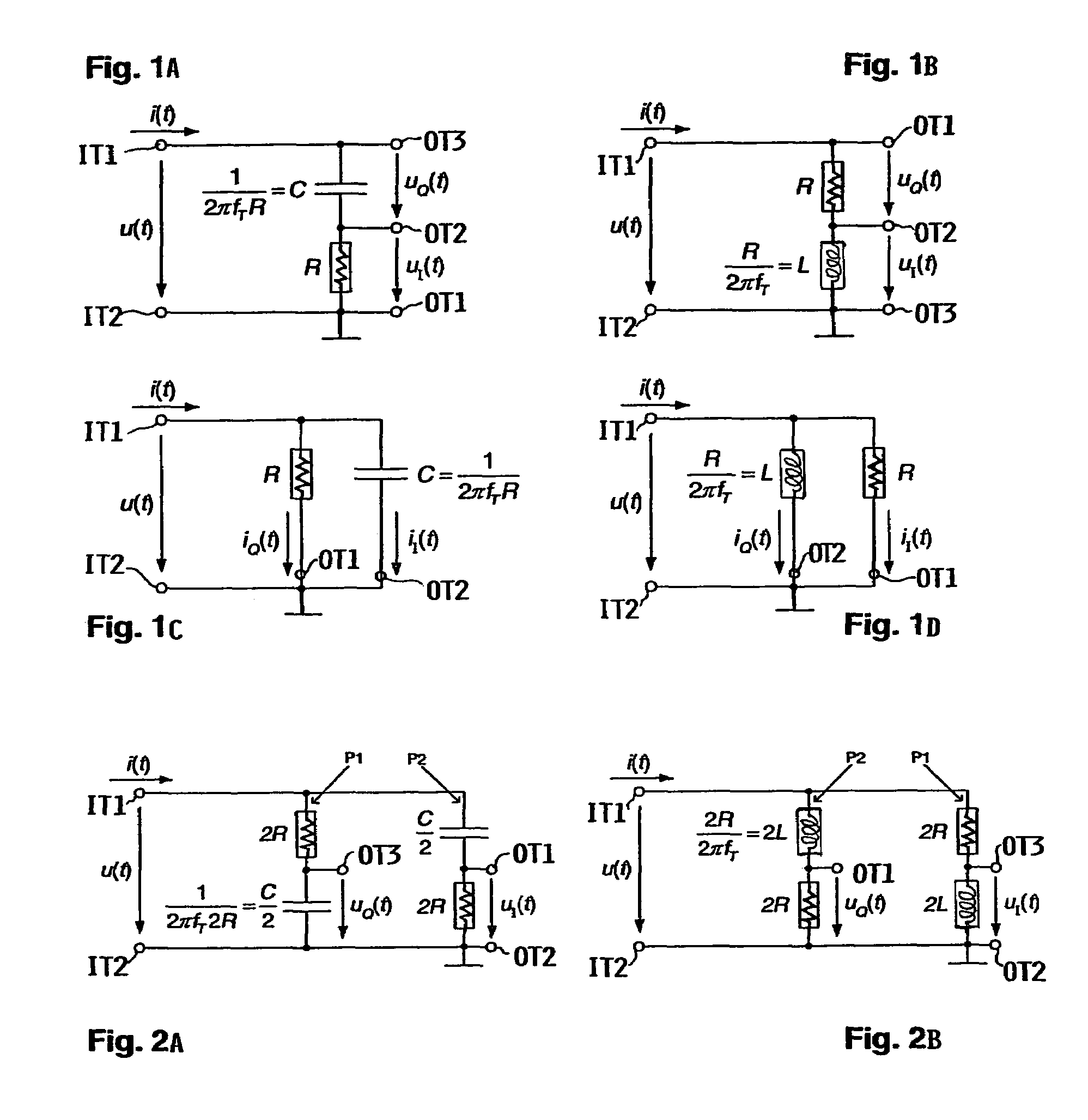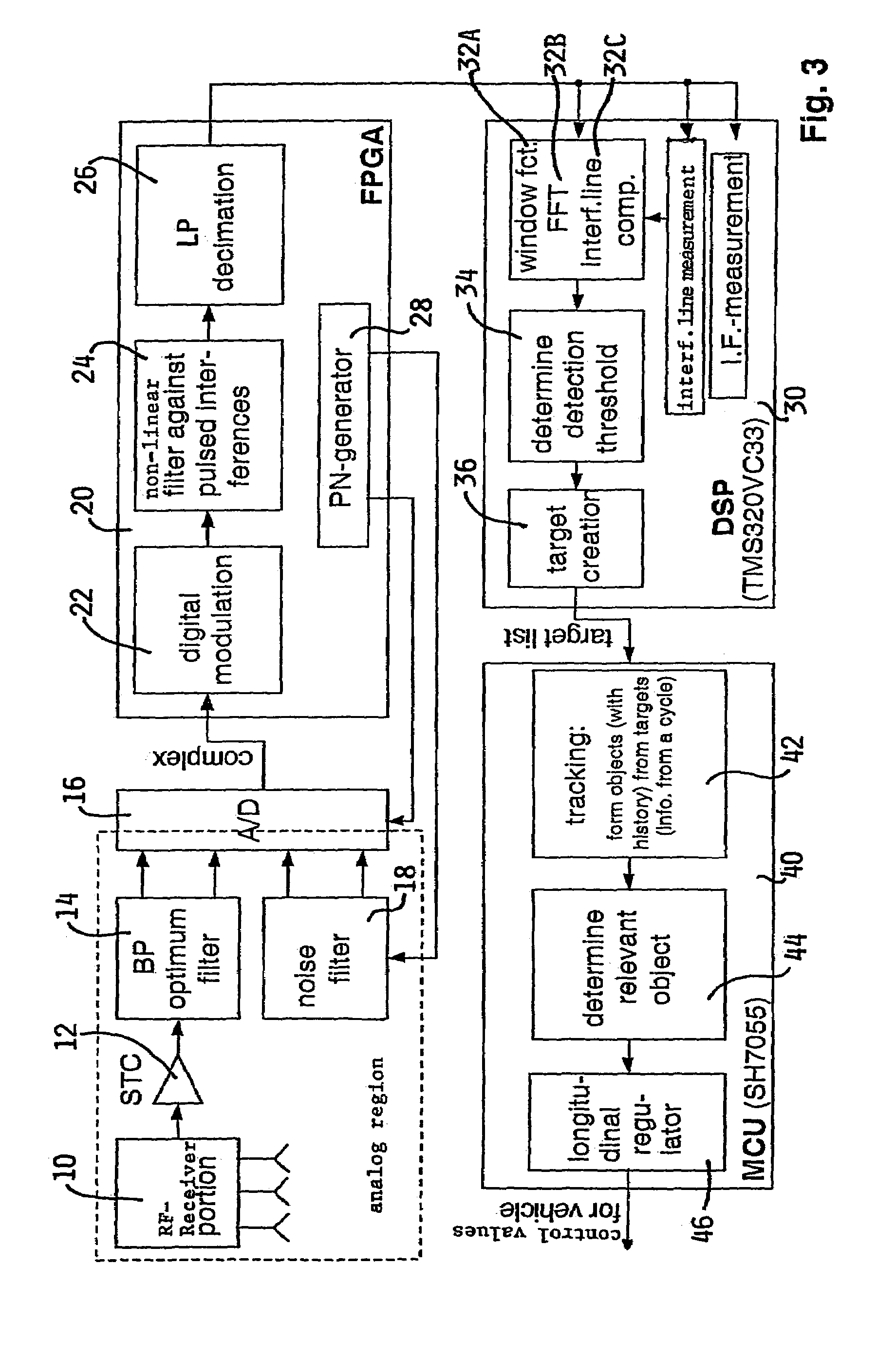Circuit arrangement for generating an IQ-signal
a circuit arrangement and iq-signal technology, applied in the field of can solve the problems of adding complexity and expense to the circuit arrangement for generating iq-signal
- Summary
- Abstract
- Description
- Claims
- Application Information
AI Technical Summary
Benefits of technology
Problems solved by technology
Method used
Image
Examples
Embodiment Construction
[0041]FIGS. 1A and 1B show the generation of an IQ-voltage signal for fT>0 by means of a series connection of ohmic resistance R and reactance C or L as well as tapping of the IQ-voltage signal, FIGS. 1C and 1D show the generation of an IQ-current signal by means of a parallel connection of ohmic resistance R and reactance C or L as well as tapping of the IQ-current signal.
[0042]Consequently, an electric input signal with voltage u(t) and / or current i(t) is applied to a first input terminal IT1 relative to a second input terminal IT2, which is connected to a reference potential or particularly grounded (⊥) in this example. The input signal varies about a carrier frequency fT and in comparison with the carrier frequency is preferably narrow-band. Starting from a carrier frequency of 200 MHz a useful signal bandwidth of 25 kHz is used in an application considered in detail below, without significant interference occurring due to the slightly deviating amplitude.
[0043]The input signal ...
PUM
 Login to View More
Login to View More Abstract
Description
Claims
Application Information
 Login to View More
Login to View More - R&D
- Intellectual Property
- Life Sciences
- Materials
- Tech Scout
- Unparalleled Data Quality
- Higher Quality Content
- 60% Fewer Hallucinations
Browse by: Latest US Patents, China's latest patents, Technical Efficacy Thesaurus, Application Domain, Technology Topic, Popular Technical Reports.
© 2025 PatSnap. All rights reserved.Legal|Privacy policy|Modern Slavery Act Transparency Statement|Sitemap|About US| Contact US: help@patsnap.com



